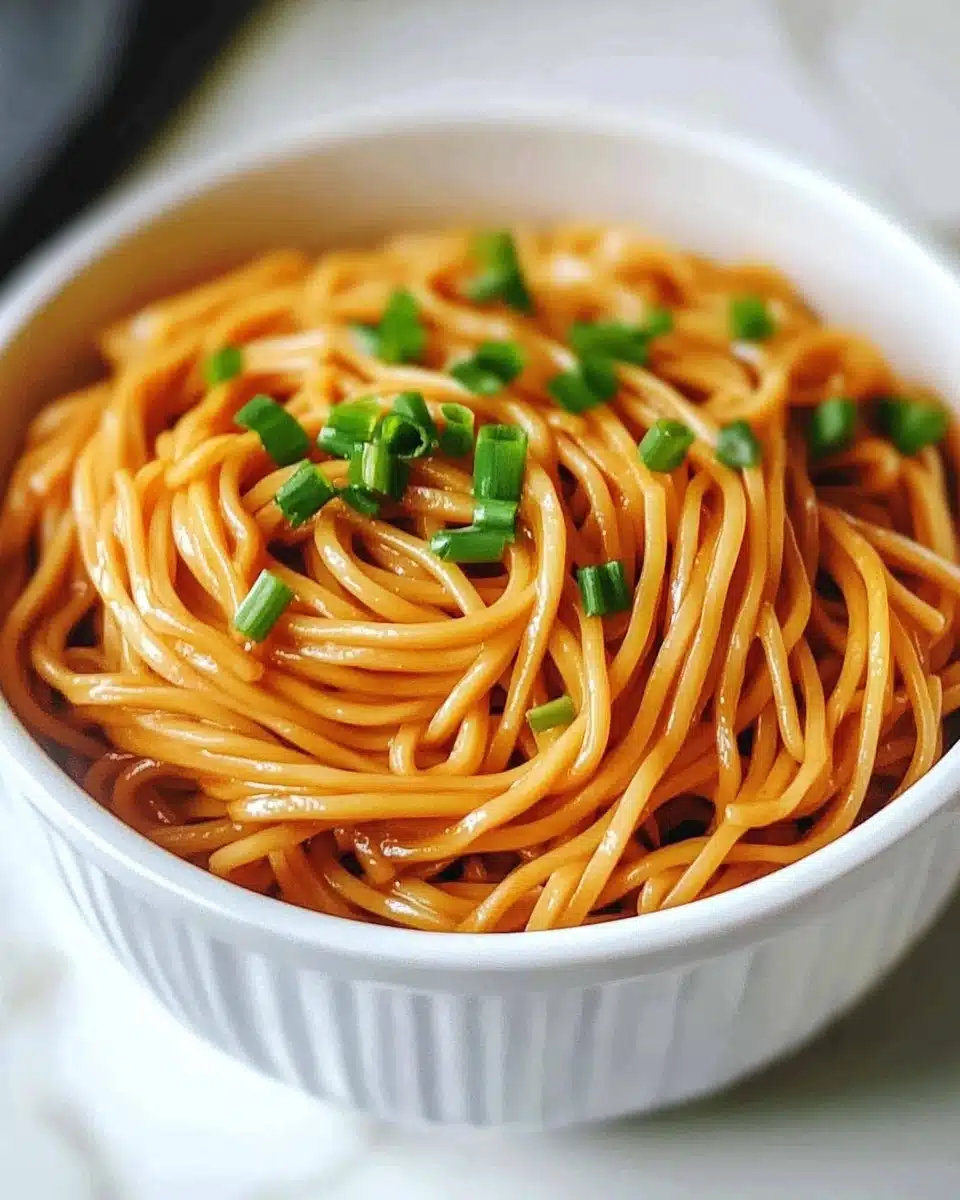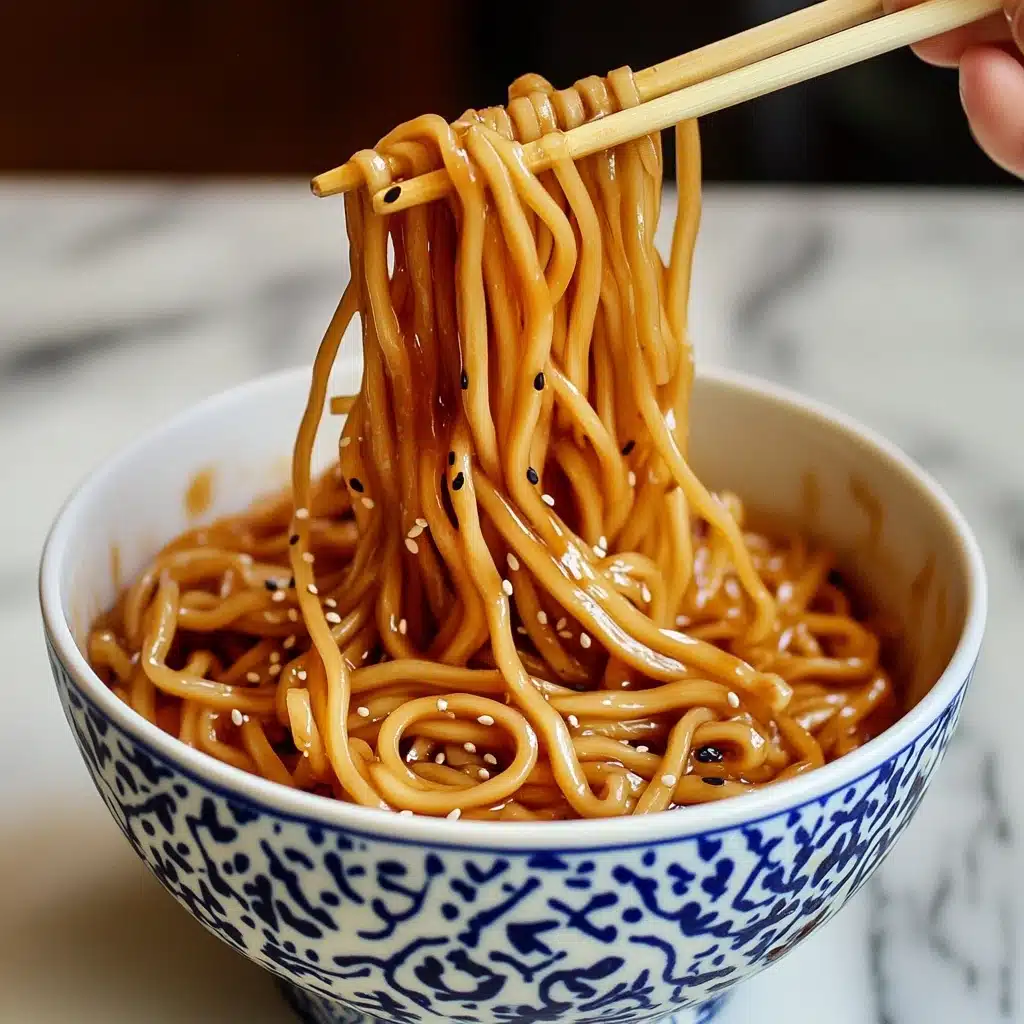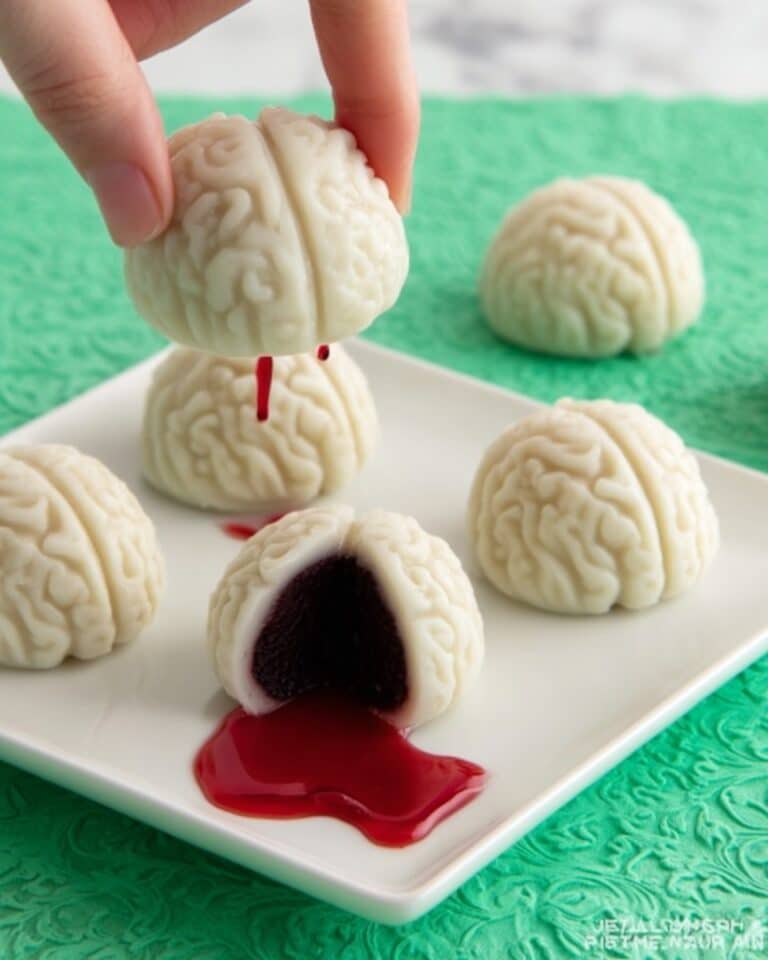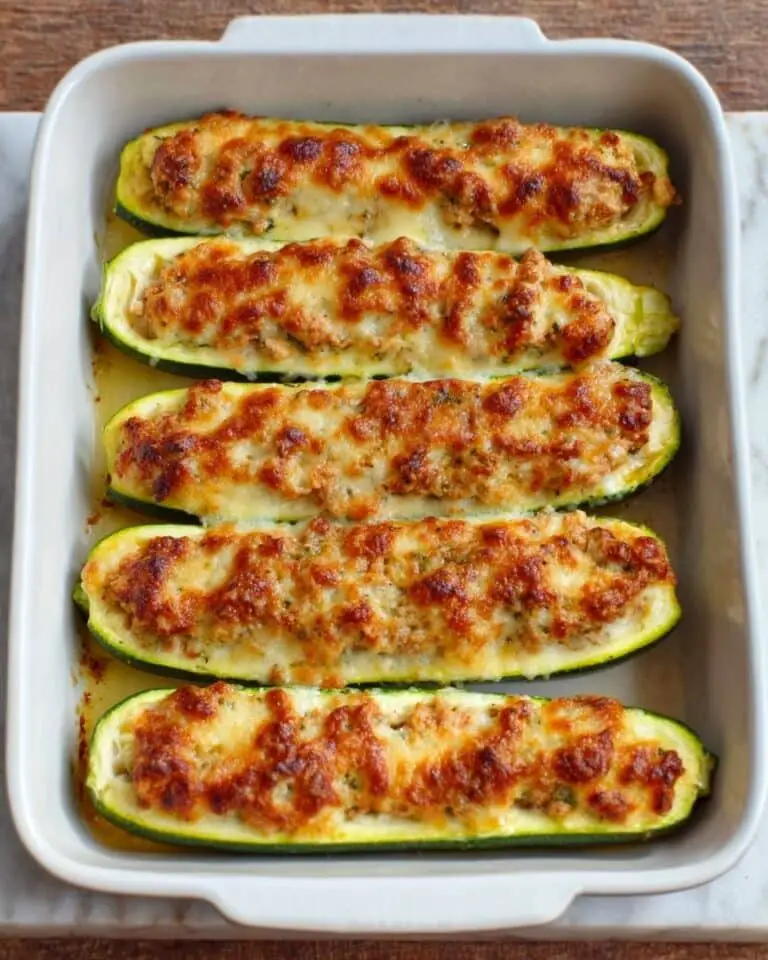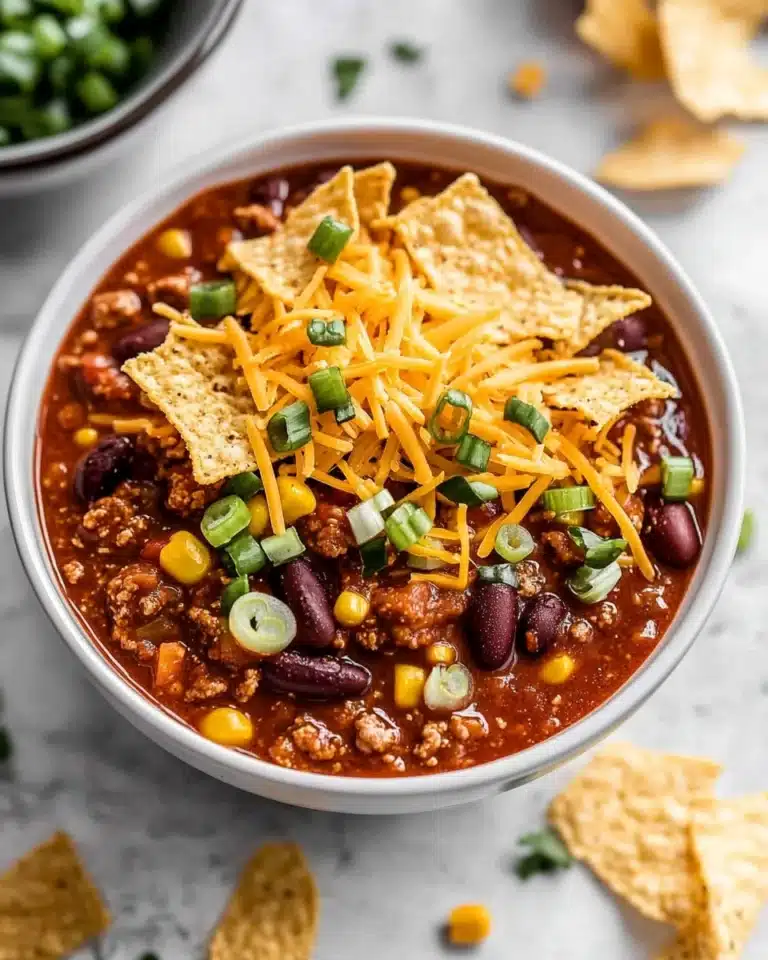I absolutely love sharing this Hibachi Noodles Recipe because it brings that fun, restaurant-style vibe right into your own kitchen. There’s something so satisfying about tossing up a simple, flavorful noodle dish that tastes like it’s been cooked on a sizzling hibachi grill, but without needing any fancy equipment. Plus, it’s lightning fast — perfect for those weeknight dinners when you want something comforting without hours of prep.
When I first tried making hibachi noodles at home, I was amazed at how just a few pantry staples like soy sauce, butter, and sesame oil transform plain pasta into a dish that’s rich, savory, and just a touch sweet. You’ll find that this Hibachi Noodles Recipe is incredibly versatile too, whether you’re feeding a crowd or making a solo lunch, and it pairs beautifully with grilled meats or stir-fried veggies.
Why You’ll Love This Recipe
- Quick and Easy: It comes together in about 20 minutes, perfect for busy days or last-minute dinners.
- Customizable Flavor: The combination of butter, soy sauce, and teriyaki lets you balance salty, sweet, and savory just how you like it.
- Restaurant-Quality Taste: You’ll amaze yourself and your guests with noodles that taste like they came straight from a hibachi grill.
- Perfect Base for Add-Ins: Easily add your favorite proteins or vegetables for a one-pan meal tailored to your cravings.
Ingredients You’ll Need
Each ingredient in this Hibachi Noodles Recipe plays a role in building those authentic, umami-packed flavors we all crave. From the simple linguine noodles to the fragrant sesame oil, they come together to create something seriously crave-worthy. When you shop, I recommend fresh garlic and good-quality soy and teriyaki sauces for that extra depth.
- Linguine (or noodles/pasta of choice): I like linguine for its flat shape that holds onto sauces beautifully, but feel free to use your favorite noodle.
- Butter: This is the flavor base that lends that rich, silky texture—don’t skimp here.
- Minced garlic: Fresh is best to get that punchy aroma and taste.
- Sugar: Balances the salty flavors with a slight sweetness for that classic hibachi flavor.
- Soy sauce: Look for low-sodium versions if you want to control saltiness.
- Teriyaki sauce: Adds a subtle sweetness and complexity; if you like you can make your own or buy a trusted brand.
- Salt and pepper: To adjust seasoning according to your taste.
- Sesame oil: The finishing drizzle that brings a nutty, toasted aroma—absolutely essential.
- Sesame seeds (optional): Great for garnish and a bit of crunch if you like that texture contrast.
Variations
I love tweaking this Hibachi Noodles Recipe depending on what’s in my fridge or what kind of mood I’m in—this recipe invites customization! Don’t hesitate to make it your own by adding veggies, swapping sauces, or turning it into a whole meal with some protein.
- Veggie Boost: I often sauté mushrooms, bell peppers, or zucchini before tossing the noodles in—they add color and nutrition, plus extra texture.
- Protein Addition: Grilled chicken, shrimp, or steak make this a fully satisfying main dish; it’s my go-to when I want a hearty dinner.
- Spicy Kick: If you like heat, sprinkle in some red pepper flakes or drizzle sriracha—this really wakes up the flavors.
- Gluten-Free: Use gluten-free noodles and swap soy sauce for tamari to make the dish safe for gluten-sensitive friends.
How to Make Hibachi Noodles Recipe
Step 1: Melt the Butter and Sauté Garlic
Start by heating a large skillet over medium-high heat and melting the butter. I like to use real butter (never margarine) because it adds that luscious creaminess to the noodles. Once melted, toss in the minced garlic and sauté it for about 30 seconds up to a minute until it becomes fragrant—don’t let it brown, or it’ll turn bitter. This step is crucial because the garlic-infused butter is the foundation for all the flavor that follows.
Step 2: Add the Noodles and Coat Them Well
Next, add the cooked noodles to your garlic butter mixture. I recommend cooking the noodles al dente according to package instructions so they have just the right bite. Toss them around in the skillet, making sure each strand gets coated with that buttery garlic goodness. This is where your noodles start soaking up flavor, so give them a good stir.
Step 3: Stir in Sugar, Soy Sauce, and Teriyaki Sauce
Here’s the magic moment—mix in the sugar, soy sauce, and teriyaki sauce. The sugar balances and enhances the savory flavors, while the soy and teriyaki add salty and sweet layers. Toss everything together thoroughly so the noodles are evenly coated. You’ll start seeing a slight glaze form, which means you’re on the right track.
Step 4: Season and Finish with Sesame Oil
Go ahead and season the noodles with salt and pepper according to your taste—remember that soy and teriyaki sauces already add salt, so take it slow. Then, take the skillet off the heat and drizzle the sesame oil over the noodles. This finishing touch is what gives you that irresistible, nutty aroma and flavor reminiscent of your favorite hibachi spot.
Step 5: Garnish and Serve Hot
Finally, if you like, sprinkle on some sesame seeds for a little crunch and visual appeal. Serve these hibachi noodles hot, paired with your choice of side dishes or proteins. Trust me, they go perfectly with grilled chicken or stir-fried veggies for a complete meal that feels fancy but comes together effortlessly.
Pro Tips for Making Hibachi Noodles Recipe
- Cook Noodles Al Dente: I always undercook my noodles by a minute so they finish cooking in the pan without becoming mushy.
- Don’t Overcook Garlic: Burnt garlic ruins the flavor—keep a close watch and remove the pan from heat if it starts to brown too fast.
- Adjust Sauces to Taste: Everyone’s palate is different—I like mine a bit sweeter, so I sometimes add an extra pinch of sugar or teriyaki.
- Add Sesame Oil at the End: Putting it in too early will lose that fresh toasty aroma, so save it for the final drizzle.
How to Serve Hibachi Noodles Recipe
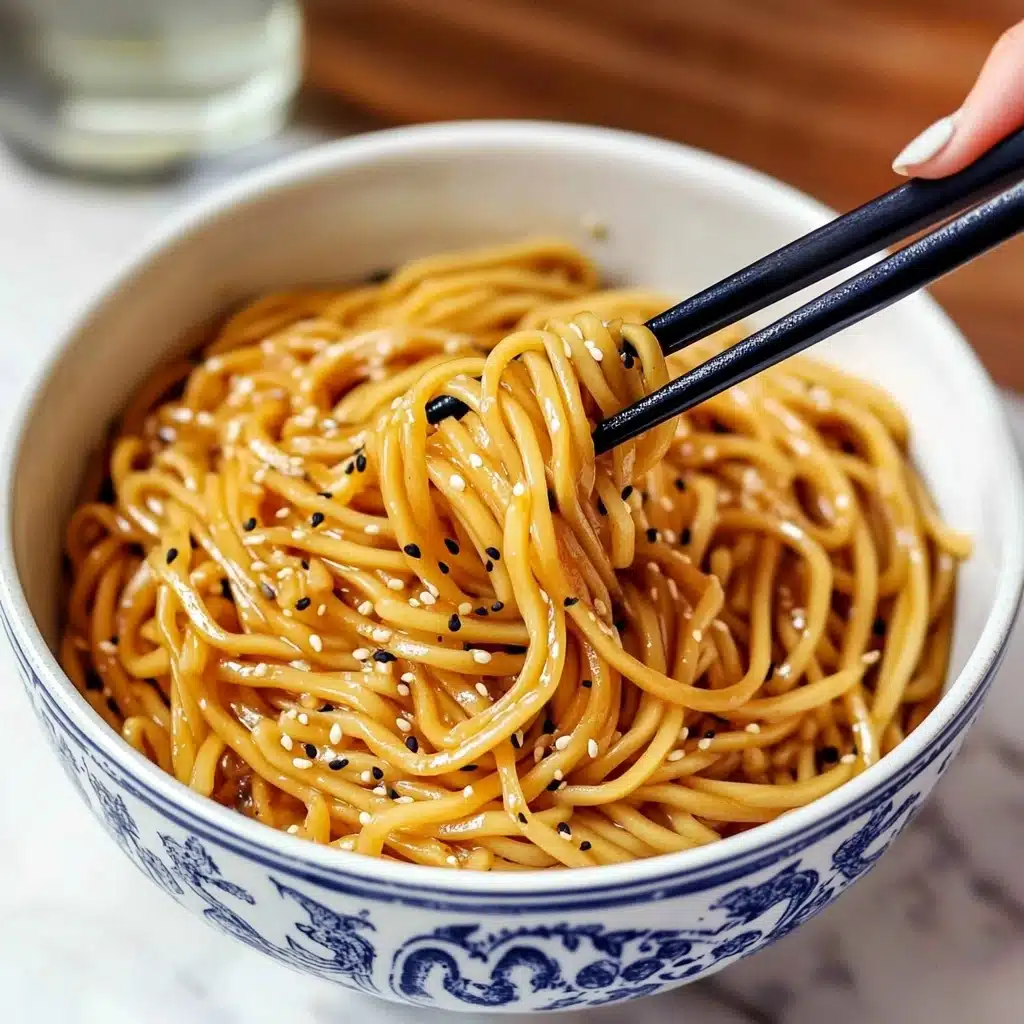
Garnishes
Whenever I serve hibachi noodles, I love to sprinkle toasted sesame seeds and sometimes finely sliced green onions on top—they add freshness and a subtle crunch that uplifts the whole dish. If I’m feeling fancy, a few thin strips of red chili or a squeeze of lime brightens things up beautifully.
Side Dishes
My go-to sides with this recipe are simple grilled chicken or shrimp, plus some stir-fried vegetables like bok choy or snap peas. A crisp Asian slaw or steamed edamame also work fantastic if you want to keep things light and veggie-forward.
Creative Ways to Present
For special occasions, I like to serve hibachi noodles in individual bowls garnished with microgreens or cilantro for a pop of color. Another fun idea is plating them alongside a sizzling skillet of grilled teriyaki steak or tofu so everyone can assemble their perfect bite at the table.
Make Ahead and Storage
Storing Leftovers
I store any leftover hibachi noodles in an airtight container in the refrigerator, and they usually keep well for up to 3 days. I like to let them cool completely before sealing to keep the texture just right without getting soggy.
Freezing
Freezing hibachi noodles is possible but not my favorite since the sauce can separate and noodles may get a bit mushy upon thawing. If you do freeze, flash freeze in a single layer first, then transfer to a freezer-safe bag to minimize clumping.
Reheating
To reheat, I recommend warming the noodles gently in a skillet over medium-low heat, adding a splash of water or soy sauce to revive the sauciness. Avoid using the microwave if you want to keep that nice texture, but it works fine in a pinch.
FAQs
-
Can I use different pasta types for this Hibachi Noodles Recipe?
Absolutely! While linguine or flat noodles work great since they hold sauce well, you can also use spaghetti, rice noodles, or even udon. Just make sure to cook them al dente to avoid mushiness when tossing in the skillet.
-
What can I add to make Hibachi Noodles more nutritious?
Adding sautéed vegetables like bell peppers, mushrooms, or snap peas instantly boosts nutrition and flavor. You can also include protein like grilled chicken, shrimp, tofu, or steak to make it a balanced meal.
-
How do I make this Hibachi Noodles Recipe gluten-free?
Simply swap out regular noodles for gluten-free varieties such as rice noodles or gluten-free pasta. Replace soy sauce with tamari, which is a gluten-free alternative, and verify any other sauces used are free from gluten ingredients.
-
Can I prepare Hibachi Noodles ahead of time?
You can cook the noodles and sauce in advance, but I suggest holding off on adding the sesame oil until just before serving to keep that fresh flavor and aroma. Store the noodles separately and reheat gently before tossing with sesame oil.
Final Thoughts
This Hibachi Noodles Recipe is one of those dishes that feels like a little celebration every time I make it — simple ingredients turning into something so bold and flavorful. I love how easy it is to whip up on a whim, and how customizable it feels based on what you have at home. Trust me, once you start making your own hibachi-style noodles, you’ll keep coming back to it again and again. So grab those ingredients, give this recipe a whirl, and get ready to impress yourself with restaurant-quality noodles made right in your own kitchen!
Print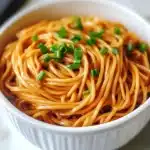
Hibachi Noodles Recipe
- Prep Time: 10 minutes
- Cook Time: 10 minutes
- Total Time: 20 minutes
- Yield: 4 servings
- Category: Main Course
- Method: Stovetop
- Cuisine: Japanese
Description
Hibachi Noodles is a flavorful and easy-to-make Japanese-inspired dish featuring tender linguine noodles coated in a rich garlic butter and soy sauce mixture with a hint of sweetness from sugar and depth from teriyaki sauce. Finished with sesame oil and optional sesame seeds, this dish pairs perfectly with stir-fried vegetables or grilled proteins for a delicious hibachi-style meal at home.
Ingredients
Noodles
- 1 lb. linguine or noodles/pasta of choice, cooked al dente
Sauce & Seasoning
- 3 tablespoons butter
- 1 tablespoon garlic, minced
- 3 tablespoons sugar
- 4 tablespoons soy sauce
- 1 tablespoon teriyaki sauce
- Salt and pepper, to taste
- 1 tablespoon sesame oil
- 1 tablespoon sesame seeds (optional, for garnish)
Instructions
- Melt the Butter: In a large skillet over medium-high heat, melt the butter. The butter gives the noodles their rich, savory base.
- Sauté the Garlic: Add minced garlic to the melted butter and sauté for about 30 seconds to 1 minute until fragrant. Be careful not to burn the garlic.
- Add the Noodles: Toss the cooked noodles into the skillet, stirring to coat them in the garlic-butter mixture.
- Incorporate the Sauces: Stir in the sugar, soy sauce, and teriyaki sauce. Toss the noodles to ensure they are evenly coated with the sauce.
- Season: Season the noodles with salt and pepper to taste. Stir well to combine.
- Drizzle with Sesame Oil: Remove the skillet from heat and drizzle sesame oil over the noodles, adding a delicious nutty flavor.
- Garnish and Serve: Garnish with sesame seeds if desired. Serve hot, and pair with hibachi-style meats or stir-fried vegetables.
Notes
- Add Veggies: Sauté mushrooms, bell peppers, or zucchini for extra flavor and texture.
- Protein Boost: Add grilled chicken, shrimp, or steak for a more filling meal.
- Spice It Up: A pinch of red pepper flakes or a drizzle of sriracha can add a bit of heat.
- Gluten-Free: Use gluten-free noodles and tamari instead of soy sauce to make this dish gluten-free.

